Why Won’t My Furnace Turn On? Common Reasons and Solutions
Your furnace is essential for keeping your home warm during cold weather, but it can sometimes refuse to turn on. If you’re asking, “Why won’t my furnace turn on?”, you’re not alone. Many homeowners experience this issue from time to time. Understanding the common reasons your furnace may not be starting can help you troubleshoot the problem and restore heat to your home. Below are several potential causes and their solutions.
1. Thermostat Issues
Your thermostat is the brain of your heating system. If it isn’t functioning properly, your furnace might not receive the signal to turn on. Here are a few things to check:
- Check the settings: Ensure your thermostat is set to “heat” and the temperature is set higher than the current room temperature.
- Replace batteries: If your thermostat uses batteries, they may be dead.
- Calibration: If the temperature reading seems off, it might need recalibration.
2. Power Issues
If your furnace doesn’t have power, it won’t turn on. Here’s how to check:
- Circuit breaker: Make sure the furnace’s circuit breaker hasn’t tripped. If it has, reset it.
- Power switch: Locate the power switch on or near your furnace and ensure it is in the “ON” position.
- Fuse check: Inspect fuses to ensure they are intact.
3. Air Filter Problems
A clogged air filter can restrict airflow, causing your furnace to overheat and shut off. To resolve this:
- Inspect the filter: Check the filter each month, especially during high-use months.
- Replace regularly: Change your air filter every three months or as needed to maintain optimal airflow.
4. Pilot Light or Ignition Problems
If you have a gas furnace, the pilot light may have gone out. In electric models, the ignition may be faulty. Check the following:
- Ignition system: Inspect the ignition system for any issues. If you find defects, contact a professional.
- Reignite pilot: If your pilot light is out, carefully follow the manufacturer’s instructions to reignite it.
5. Safety Switches and Sensors
Modern furnaces come with safety features designed to protect both the furnace and your home. If these safety switches are triggered, the furnace may not operate. Here’s how to address this:
- Ensure doors are closed: Many furnaces won’t run if service doors are open.
- Inspect the limit switch: The limit switch prevents overheating and may need to be reset or replaced if faulty.
6. Ductwork and Ventilation Blockages
Blocked ducts or vents can impede airflow and cause operational issues. Take the following steps:
- Check for obstructions: Inspect your vents and ductwork for any blockages such as dust, debris, or furniture.
- Clean regularly: Schedule professional cleanings for your ducts to maintain efficient airflow.
7. Age of the Furnace
If your furnace is older than 15-20 years, it may be time for a replacement. Older units can become less efficient and more prone to problems. Look for:
- Frequent repairs: If you’re calling for repairs often, a new furnace may be more cost-effective.
- Ask for an estimate: Consult a professional technician for an evaluation of your unit and potential replacement costs.
If you’ve gone through these troubleshooting steps and still can’t find a solution, it might be time to contact a professional HVAC technician. They can help diagnose more complex issues that could be affecting your furnace’s operation.
For more information and home repair tips, you can visit these resources:
- Energy.gov – Maintaining Your Furnace
- HVAC.com – Furnace Troubleshooting Guide
- Angie’s List – Furnace Repair Tips
Remember, it’s always better to be proactive about your furnace’s maintenance. Regular check-ups can help prevent unexpected failures and keep your home comfy and warm.
Essential Furnace Maintenance Tips to Prevent Breakdowns
Regular furnace maintenance is crucial for ensuring your heating system runs smoothly and efficiently. Neglect can lead to costly breakdowns and inefficient heating. Here are some essential tips to keep your furnace in top shape.
1. Replace the Air Filter Regularly
One of the simplest yet most effective ways to maintain your furnace is by replacing the air filter. A dirty filter restricts airflow, causing the furnace to work harder and reducing its efficiency. Aim to check the filter every month and replace it every three months, or as needed.
2. Schedule Annual Professional Inspections
While you can handle basic maintenance, an annual inspection by a professional is essential. A trained technician can identify potential problems before they escalate, ensuring your furnace operates efficiently. Consider scheduling your inspection before the heating season begins.
3. Clean the Furnace Area
Your furnace deserves a clean space to work. Dust, pet hair, and debris can block vents and reduce efficiency. Make sure to:
- Clear at least two feet of space around the furnace.
- Regularly vacuum the area surrounding the unit.
- Ensure that no furniture or items are blocking the vents.
4. Check the Thermostat Settings
Sometimes, issues may arise from a simple thermostat problem. Ensure that your thermostat is functioning properly and set to the desired temperature. If your furnace doesn’t respond, check for:
- Dead batteries in the thermostat.
- Loose or damaged wires.
5. Inspect the Ductwork
Leaky ducts can significantly impact your heating system’s efficiency. Inspect your ductwork for any signs of wear or damage. If you notice gaps or holes, sealing them can help maintain airflow and reduce energy costs.
6. Verify the Vents Are Open
Before you turn your furnace on for the season, double-check that all vents are open and unobstructed. This ensures proper airflow throughout your home, allowing for even heating and preventing potential furnace strain.
7. Keep the Blower Motor Clean
The blower motor circulates heated air throughout your home. Dust can accumulate and affect its performance. Regularly clean the blower motor using a soft brush or a vacuum attachment to prevent overheating and ensure optimal airflow.
8. Monitor Your Gas Line
If you have a gas furnace, it’s crucial to monitor the gas line for any leaks. If you smell gas, evacuate the area immediately and contact your gas company or a professional technician. Regularly check the connections for any signs of corrosion or damage.
9. Lubricate Moving Parts
Furnaces have several moving parts that require proper lubrication to function efficiently. Schedule regular lubrication of the motor and other parts during professional inspections. This can reduce wear and prolong the life of your furnace.
10. Invest in a Programmable Thermostat
A programmable thermostat can help optimize your furnace’s efficiency. By allowing you to set specific heating schedules, it can lower energy consumption when you’re not at home while still keeping your space warm when you need it.
By following these maintenance tips, you can prevent unexpected breakdowns and enhance the efficiency of your furnace. Regular care not only extends the lifespan of your heating system but also ensures that your home remains warm and comfortable throughout the colder months.
For more information on furnace maintenance, check out EnerGuide or visit HVAC.com. These resources offer in-depth guidance on maintaining your heating system.
Understanding the Different Types of Furnaces and Their Issues
When considering how to keep your home warm, understanding the different types of furnaces can be invaluable. Different systems come with distinctive features and possible issues. Knowing what to look for can ensure you maintain comfort during the colder months.
There are mainly three types of furnaces: gas, electric, and oil. Each type works differently and has its own set of problems that may arise.
Gas Furnaces
Gas furnaces are among the most popular for home heating. They typically run on natural gas, which tends to be more affordable than electric options. However, issues can arise that might prevent your gas furnace from operating efficiently.
- No Ignition: This could be due to a faulty igniter or a gas supply issue.
- Dirty Burners: If the burners are clogged, they won’t ignite properly.
- Thermostat Problems: Sometimes, the thermostat may fail, leaving you unable to set your desired temperature.
Electric Furnaces
Electric furnaces use electric coils to produce heat. They are typically cheaper to install compared to gas furnaces. However, they can lead to higher electricity bills, particularly in colder climates. Common issues include:
- Blown Fuses: If your electric furnace is not turning on, check your fuses or circuit breakers.
- Faulty Heating Elements: Over time, heating elements may degrade and need replacement.
- Thermostat Issues: Much like gas furnaces, electric systems can suffer from thermostat malfunctions.
Oil Furnaces
Though less common today, oil furnaces still exist, especially in rural areas. These systems require oil deliveries and typically generate more heat than electric furnaces. However, they also come with a unique set of challenges:
- Low Oil Supply: Running out of oil will leave your home cold.
- Clogged Filter: Oil filters can accumulate dirt, leading to performance issues or failure to start.
- Pump Problems: If the oil pump is not functioning correctly, your system won’t be able to deliver the oil needed for heating.
Common Issues Across All Types
Regardless of the fuel source, all furnaces share some common problems:
- Dirty Air Filters: Clogged filters can restrict airflow, making your furnace work harder and less efficiently.
- Age: Older systems tend to wear out and may require more frequent repairs.
- Loud Noises: Strange sounds can indicate mechanical problems that should be inspected immediately.
When to Call a Professional
While some issues are minor and can be handled by a knowledgeable DIY enthusiast, others are best left to professionals. Here are signs that you should seek help:
- Unusual noises that persist
- Repeated cycling on and off
- Flames that are yellow instead of blue in gas systems
To maintain your furnace and avoid potential issues, regular maintenance is essential. Annual check-ups can often catch problems before they turn serious. Furthermore, always be attuned to unusual behavior from your heating system.
For more in-depth information on furnace types and their maintenance, you can visit Energy Star or check out HVAC.com. Both resources offer expert advice on heating systems and troubleshooting.
Understanding the intricacies of your furnace may empower you to make informed decisions on maintenance and repair, keeping your home cozy through all seasons.
Signs That Indicate You Need a New Furnace
When it comes to home comfort, a functioning furnace is essential, especially during chilly months. However, there comes a time when your furnace may need to be replaced. It’s crucial to recognize the signs that indicate you may need a new furnace, as this can help avoid further discomfort and costly repairs.
Furnaces are designed to last, but they do have a lifespan. If your furnace is over 15 years old, it’s wise to start monitoring its performance closely. The following signs can help you determine if it’s time to consider investing in a new heating system.
Rising Energy Bills
One of the most noticeable signs is an increase in your energy bills. If you find that your heating costs are rising much higher than usual, your furnace may not be operating efficiently. Older furnaces have to work harder to distribute heat, leading to these higher expenses. If you notice this change, it could be a clear indication that your furnace is nearing the end of its life.
Inconsistent Heating
Do certain rooms in your home feel colder than others? If your furnace is unable to maintain a consistent temperature or if there are cold spots throughout your home, it’s a cause for concern. Inconsistent heating can indicate that your furnace is struggling to operate efficiently.
Strange Noises
Noises such as banging, squeaking, or popping can signal that something is wrong with your furnace. While normal operation may produce some sounds, loud or unusual noises may suggest mechanical issues or that your furnace is on its last legs. It’s important to pay attention to these sounds and consult a professional if they persist.
Frequent Repairs
Are you calling for repairs regularly? If you find yourself frequently fixing your furnace, this is not only inconvenient but also a sign that it may be time to replace it. Frequent repairs can add up, and investing in a new furnace might save you money in the long run.
Yellow Burner Flame
A healthy furnace should have a blue flame. If you notice a yellow flame instead, it indicates that your furnace is producing carbon monoxide, which is hazardous. This sign should not be ignored. Even if the furnace still seems to work, it’s vital to replace it immediately to ensure your safety.
Age of the Furnace
As mentioned before, the age of your furnace plays a significant role in its performance. Most furnaces have a life expectancy of around 15-20 years. If yours surpasses this range, it might be time to think seriously about a replacement, even if you haven’t yet noticed significant issues.
Increased Dust and Dirt
If you are frequently cleaning dust around your home, your furnace might be the culprit. An old or failing furnace can circulate dust and dirt more easily through your home. This not only affects your indoor air quality but can also aggravate allergies. If your furnace contributes to a dusty environment, it may be better to replace it with a newer, more efficient model.
Burning Smell
If you detect a burning smell when your furnace is running, turn it off immediately. A burning smell could indicate a serious problem, such as a fire risk. If the smell persists after cleaning or servicing, it may be time to look for a new unit.
Before making a decision, consider contacting a professional for an inspection. They can provide guidance based on the specific conditions of your furnace and the overall heating needs of your home.
If you’re experiencing any of these signs, it’s crucial to act promptly. Not only will a new furnace provide reliable heating, but it can also improve your home’s energy efficiency and indoor air quality. For more information on how to assess your heating needs, check out Energy Star’s guidelines for heating systems.
Your comfort and safety should be a top priority. If you’re noticing these issues, do not hesitate to start planning for a new furnace. Keeping your home warm and ensuring your peace of mind is worth the investment.
How to Troubleshoot Your Furnace Before Calling a Technician
Winter can be quite brutal, and when your furnace won’t turn on, the chill can become unbearable. Before you reach for the phone to call a technician, there are several steps you can take to troubleshoot the problem. Often, the solution is simpler than you might think.
Check the Thermostat Settings
Start by ensuring that your thermostat is set to ‘heat’. If it’s set to ‘cool’, your furnace will not kick on. Also, check the temperature setting. Sometimes, adjusting it a few degrees higher can prompt the furnace to start. If your thermostat uses batteries, replace them to ensure it functions correctly.
Inspect the Power Supply
A common issue is the power supply to the furnace. Make sure the power switch is on. If it’s connected to a circuit breaker, check if it has tripped. If so, reset the breaker and see if your furnace responds.
Examine the Air Filter
Clogged air filters can significantly impede furnace performance. A dirty filter can restrict airflow, causing the furnace to overheat and shut down as a safety precaution. Here’s what you can do:
- Remove the air filter.
- Inspect for dirt and debris.
- If it’s dirty, replace it with a new one. Most filters should be changed every 1–3 months.
Enable the Gas Supply
If you have a gas furnace, ensure that the gas supply is turned on. Locate the gas valve near the furnace and ensure that it is in the ‘on’ position, which generally aligns with the gas line. If you’re unsure, consult the owner’s manual. You should also check if the pilot light is lit. If it’s out, follow the manufacturer’s instructions to relight it.
Inspect for Error Codes
Modern furnaces often come equipped with a LED light that flashes error codes. Refer to your furnace manual for a list of codes and what they mean. If a specific error code appears, follow the corresponding troubleshooting steps.
Check the Venting System
Blocked vents can cause your furnace to malfunction. Inspect your vents for any obstructions such as snow, ice, or debris. Ensure that the exhaust vent from your furnace is clear of blockages. A blocked exhaust can lead to serious safety issues.
Test the Safety Switches
Most furnaces have safety switches that prevent them from operating under unsafe conditions. Check the door switch on the furnace—if the door is not aligned properly, the switch may not engage. Ensure that all panels are securely closed and that the switch functions properly.
Perform a Reset
If your furnace has a reset button, you can try resetting it as a final step. Usually, this button is located near the blower motor. By pressing and holding it for a few seconds, you may restore functionality.
When to Call a Technician
If you’ve gone through these troubleshooting steps and your furnace still won’t turn on, it might be time to call a professional. Issues such as faulty wiring, a bad ignition system, or a malfunctioning blower motor usually require professional intervention.
| Common Issues | Signs | Action |
|---|---|---|
| Thermostat Issues | Blank screen or set incorrectly | Check settings and replace batteries |
| Power Supply | No response from furnace | Check power switch and circuit breaker |
| Dirty Air Filter | Frequent shutoff or poor airflow | Replace air filter |
| Gas Supply Problems | Gas valve off or pilot light out | Turn on gas valve and relight pilot if needed |
By being proactive and following these troubleshooting steps, you may be able to resolve the issue with your furnace. However, if these solutions do not work, don’t hesitate to contact a certified technician who can diagnose and fix the problem safely.
For more detailed guidance and services, you can visit Angie’s List or read more at HVAC.com for comprehensive furnace troubleshooting tips.
Energy Efficiency and Its Impact on Furnace Performance
When it comes to your home heating system, understanding energy efficiency is crucial for optimal furnace performance. Energy-efficient furnaces not only lower utility bills but also contribute to a more sustainable environment. By ensuring your heating system operates efficiently, you can maximize comfort while minimizing costs. Let’s explore some key aspects of energy efficiency and how it impacts furnace performance.
How Energy Efficiency Affects Heating Costs
Energy-efficient furnaces are designed to convert a higher percentage of fuel into heat. This means that more of the energy you pay for is actually used to warm your home. If you have an older, less efficient furnace, you may be throwing money away on heating costs. In fact, according to the U.S. Environmental Protection Agency’s Energy Star program, replacing an old furnace with a high-efficiency model can save you up to 30% on your heating bills.
Furnace Efficiency Ratings
Furnace efficiency is often measured by the Annual Fuel Utilization Efficiency (AFUE) rating. This percentage represents how much fuel a furnace converts into usable heat. For example:
| AFUE Rating | Description |
|---|---|
| 80% – 89% | Middle-range efficiency |
| 90% – 98% | High-efficiency models |
When considering a new furnace, look for models with AFUE ratings of 90% or higher for maximum savings. Higher ratings mean that the furnace not only saves energy but also has a reduced environmental impact.
Improving Energy Efficiency in Your Home
Even the most efficient furnace can struggle if your home isn’t energy-efficient. Enhancing your home’s insulation and sealing any drafts can significantly improve furnace performance. Here are some tips you can implement:
- Insulation: Upgrading your home insulation can keep heat from escaping.
- Seal Drafts: Caulk around windows and doors to prevent cold air from entering.
- Thermostats: Installing a programmable thermostat can help you better control your heating schedule.
- Regular Maintenance: Schedule regular furnace maintenance to ensure optimal operation.
Choosing the Right Heating System
Selecting the right furnace can make a dramatic difference in energy efficiency. Options include:
- Gas Furnaces: Generally have higher efficiencies than electric models and are less expensive to operate.
- Electric Furnaces: Can be more expensive to run but are easier to install and maintain.
- Heat Pumps: Provide both heating and cooling, making them versatile options for energy savings.
When exploring options, consult with professionals from reliable sources such as HVAC.com or HomeAdvisor for comprehensive advice tailored to your specific needs.
Regular Maintenance and Inspections
To ensure your furnace continues to operate efficiently, regular maintenance is essential. Schedule annual inspections with a qualified technician. They will check key components such as:
- Air filters
- Burners and heat exchangers
- Blower motors
- Gas lines and connections
Proper maintenance not only prolongs the lifespan of your furnace but also ensures it operates efficiently, which directly impacts your energy costs.
The Bottom Line
Investing in an energy-efficient furnace and maintaining your heating system are crucial steps in managing your home’s heating efficiency. You will enjoy lower utility bills and a more comfortable living environment. Always stay informed about the latest furnace technologies and energy-saving tips. For further insights on energy-efficient heating solutions, consider resources like U.S. Department of Energy and Energy Star.
The Importance of Regular HVAC Inspections and Tune-Ups
Regular HVAC inspections and tune-ups play a crucial role in maintaining a comfortable indoor environment, optimizing energy efficiency, and prolonging the lifespan of your heating and cooling systems. By investing time and resources into these services, you can benefit greatly in the long run, avoiding costly repairs and ensuring your systems run smoothly.
Benefits of Regular HVAC Inspections
Scheduling regular HVAC inspections can translate into several key advantages:
- Enhanced Efficiency: Over time, HVAC systems can accumulate dirt and debris, which can hinder efficient airflow. Regular inspections ensure that components are clean, and any obstructions are addressed, maximizing energy efficiency.
- Extended Equipment Life: Much like a vehicle, your HVAC systems require maintenance to operate at their best. By conducting routine inspections, you can spot potential issues early and prevent bigger problems down the line, leading to a longer lifespan for your units.
- Improved Air Quality: Dust, mold, and allergens can build up within your HVAC systems. Regular servicing helps to clean these contaminants, promoting better air quality in your home.
- Cost Savings: Prevention is often less expensive than repair. By identifying problems before they escalate, you can avoid the higher costs associated with emergency repairs or significant equipment replacement.
- Compliance with Warranty Requirements: Some warranties require routine maintenance to remain valid. Regular inspections ensure compliance, protecting your investment.
Key Components of an HVAC Tune-Up
During a typical HVAC tune-up, several components will be examined and serviced. These include:
- Thermostat Calibration: Technicians will ensure that your thermostat is functioning correctly and efficiently, adjusting settings to optimize performance.
- Filter Replacement: Dirty filters can obstruct airflow and affect efficiency. Technicians will replace or clean filters, enhancing performance.
- Duct Inspection: Checking for leaks in ductwork helps to prevent energy loss and ensures that conditioned air reaches its destination effectively.
- Refrigerant Levels: The HVAC technician will check refrigerant levels and recharge the system if necessary, ensuring optimal cooling performance.
- Electrical Components: Inspecting electrical connections can prevent dangerous situations. Proper tightening and connections are essential for safety and performance.
The Right Time for Inspections
Scheduling your HVAC inspections at the right time can make a significant difference. Ideally, you should aim for:
| Season | Recommended Service |
|---|---|
| Spring | Cooling system inspection |
| Fall | Heating system inspection |
By conducting inspections before the peak seasons of summer and winter, you can address any issues before they become critical during high usage periods.
Finding a Reliable HVAC Service Provider
When looking for a trustworthy HVAC service provider, consider the following criteria:
- Experience and certifications: Look for a company with a proven record and well-trained technicians.
- Customer reviews: Check online reviews to get a sense of the company’s reputation among its clients.
- Transparent pricing: Ensure they provide clear estimates and a breakdown of their services.
- Customer service: A responsive team that answers your questions can make a significant difference in your overall experience.
For quality HVAC iservices, you might want to check out Angie’s List for customer reviews or Home Advisor for finding local professionals.
Regular HVAC inspections and tune-ups may require some scheduling upfront, but the long-term benefits — cost savings, extended lifespan, and improved indoor comfort — are invaluable. With the right maintenance, your HVAC systems can provide reliable service for years to come, ensuring your home remains a cozy retreat no matter the season.
Key Takeaway:
When faced with the frustrating situation of your furnace not turning on, it’s crucial to understand the underlying reasons and potential solutions. There are several common issues that could leave you in the cold, such as a faulty thermostat, dirty filters, or issues with the electrical system. Each problem has its own set of solutions, from simply replacing batteries in your thermostat to more complex issues needing professional help. Having an awareness of these common problems can empower you to troubleshoot effectively before seeking professional assistance.
Regular maintenance is key to preventing furnace breakdowns and ensuring longevity. This includes changing filters, cleaning ducts, and scheduling annual inspections. A well-maintained furnace operates more efficiently, saving you money on energy bills and reducing the likelihood of unexpected failures. Energy efficiency can significantly impact performance, so consider upgrading to a more efficient model if your current furnace is outdated.
Understanding the types of furnaces can also shed light on the common issues you might face. From gas to electric units, each type has specific quirks and potential problems, so knowing what you have can simplify the troubleshooting process.
Pay attention to the signs that may indicate it’s time for a new furnace, such as unusual noises, a significant increase in energy bills, or uneven heating throughout your home. These signs can be indicators of deeper issues that may not be worth repairing, making it essential to be proactive.
Don’t underestimate the importance of regular HVAC inspections and tune-ups. A professional can catch issues before they become major headaches, saving you both time and money in the long run.
The takeaway here is simple: understanding your furnace, maintaining it properly, and being proactive can significantly enhance its reliability and efficiency. By familiarizing yourself with common issues and implementing preventive measures, you can enjoy a warm home without the stress of unexpected breakdowns. Regular maintenance and timely decision-making about replacement can lead to improved comfort and lower energy costs throughout the heating season.
Conclusion
Experiencing a furnace that won’t turn on can be frustrating, especially during the colder months. By understanding the common reasons behind this issue, you can quickly identify whether it’s an easy fix or if you need professional help. Regular maintenance is key to keeping your furnace running smoothly and efficiently. Simple steps like changing filters and checking your thermostat can save you from major breakdowns later.
Different types of furnaces—whether gas, electric, or oil—have unique issues, and knowing these can help you troubleshoot problems effectively. If you notice signs that indicate your furnace is nearing the end of its lifespan, such as frequent repairs or inefficient heating, it may be time to consider a replacement.
Before calling a technician, performing some basic troubleshooting can often resolve minor issues, saving you both time and money. Furthermore, understanding energy efficiency helps you make more informed choices that impact your furnace’s performance and your overall energy costs.
Regular HVAC inspections and tune-ups are essential for maintaining optimal performance and extending the life of your furnace. By being proactive and attentive to your heating system, you can ensure a warm and comfortable home throughout the winter months. Remember, taking the time to understand your furnace can lead to better decision-making and greater peace of mind.
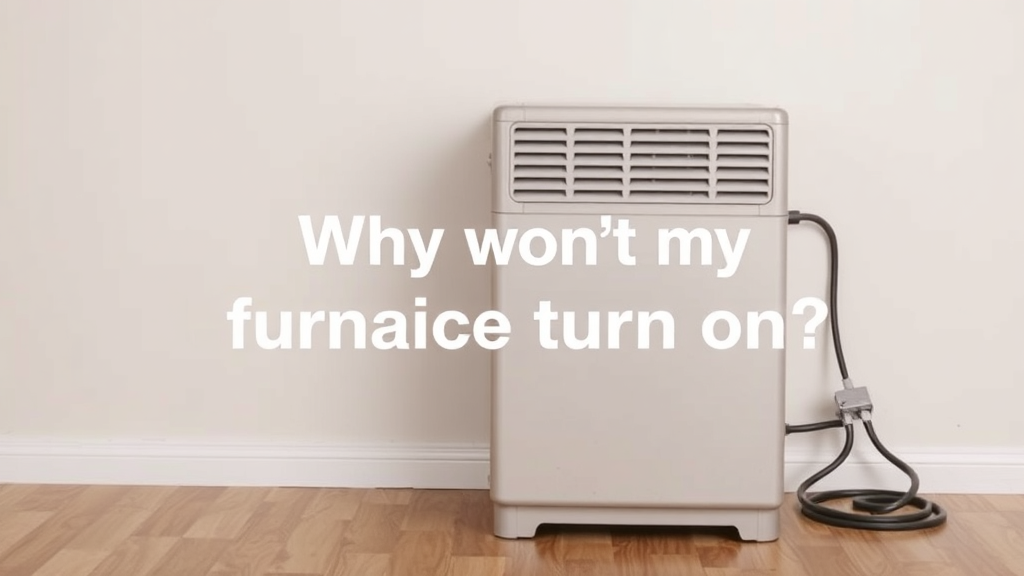
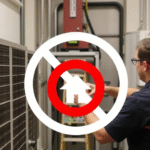
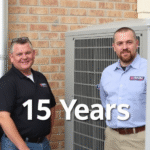
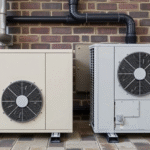
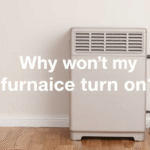
Leave a Reply